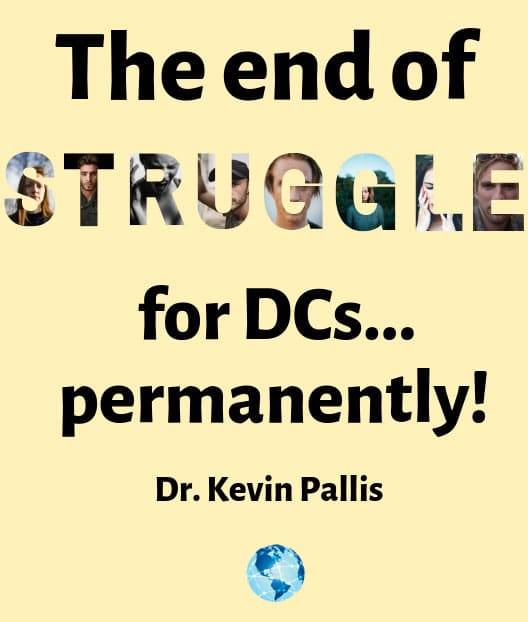Is it sounding like an academic lecture when you talk?

Finally, that new patient that you’ve been hearing all about from an existing one scheduled their appointment. You’re excited about a referral new patient because when they’re ‘spoken for’ they tend to be higher in quality, more amenable to your guidelines, and a pleasure to deal with.
Patients are people just like everybody else. They have good days and cranky days. Most people don’t like to take time from their busy schedules to be inconvenienced by coming to your office, especially if you see people for anything more than a handful of visits.
Patients unfamiliar with your office, your philosophy, or Chiropractic are naturally hesitant, somewhat untrusting and skeptical.
Something everyone can do today!
Freshen up your website. Update and upgrade. Does it describe the community of your office or does it describe what you do? There’s a big difference. Are you a pain relief only or do you offer more than adult, pain, and ache relief? By blending in with all other DCs you make it difficult to differentiate you from other DCs in your community. As a result, they will treat you as a generalist with very little respect. By not allowing your patients to get this from your website, many people will either walk out or be disappointed with your office.
Recognize that Millennials and Gen X’s tend to move slowly
Their whole lives are defined by more choices than they can make in 100 years. Be adaptable to their needs and realize that they aren’t going to necessarily be ‘all in’ with your first explanation of Chiropractic or meeting you for the first time.
You better know what’s important in their lives. If you laugh or ridicule them for spending a ton of time on their phones, they’ll find a DC that doesn’t make them feel “guilty” about their lifestyle.
Incorporate patient education every step of the way!
Too many DCs only concentrate on the symptoms and not the person. They don’t take time to educate the patient on Chiropractic. If you don’t change their prior understanding of Chiropractic they’ll continue to use it as a pain relief only for a few visits instead of exploring all dimensions. For example, bringing in their kids, difficult cases, and lifelong wellness care.
If there is insurance paperwork to be completed…help them do it!
Having patients struggle in your office filling out paperwork doesn’t help. Nothing sucks the air out of an office like paperwork. Some ‘smart’ offices offer the patient the opportunity to spend less time in office by filling out forms online. As helpful as this may appear, assisting them in your office makes them feel welcome and creates a relationship. With phantom benefits and skyrocketing deductibles, most people have less Chiropractic coverage than they think. Just say to them when filling out their insurance paperwork, we work with all types of patients from fully insured, partially insured, to cash. There will be no surprises at this office. You will know your responsibility before you agree to participate in care. You just wiped out 90% of conflict in Chiropractic offices with this concept.
Speak to the patient, not at them!
If you can’t hear how you communicate it’s because you are used to the academic language: technical and jargon-laced. It sounds like a lecture, scientific, like Sheldon on the Big Bang Theory. It can make the patient feel dumb and inadequate. Speak the language of the patient, enter their world and the relationship building will flow more organically.
No research articles!
Your patients don’t want more information necessarily. Describing the problem doesn’t answer it. They’re already swimming in information they found online and no solutions are to be found. They want to feel more connected. They can spend the rest of their lives surfing the web but ultimately nothing will be solved. Patients to trust and depend on someone who is going to deliver results.
Every one of us as DCs has our version of a nightmare visit to an ER, dentist, or MD’s office and the theme was how we were treated. Weren’t you treated more like a disease, paperwork, or insurance coverage rather than a person?
Create a relationship of trust with your next new patient and see what happens.


